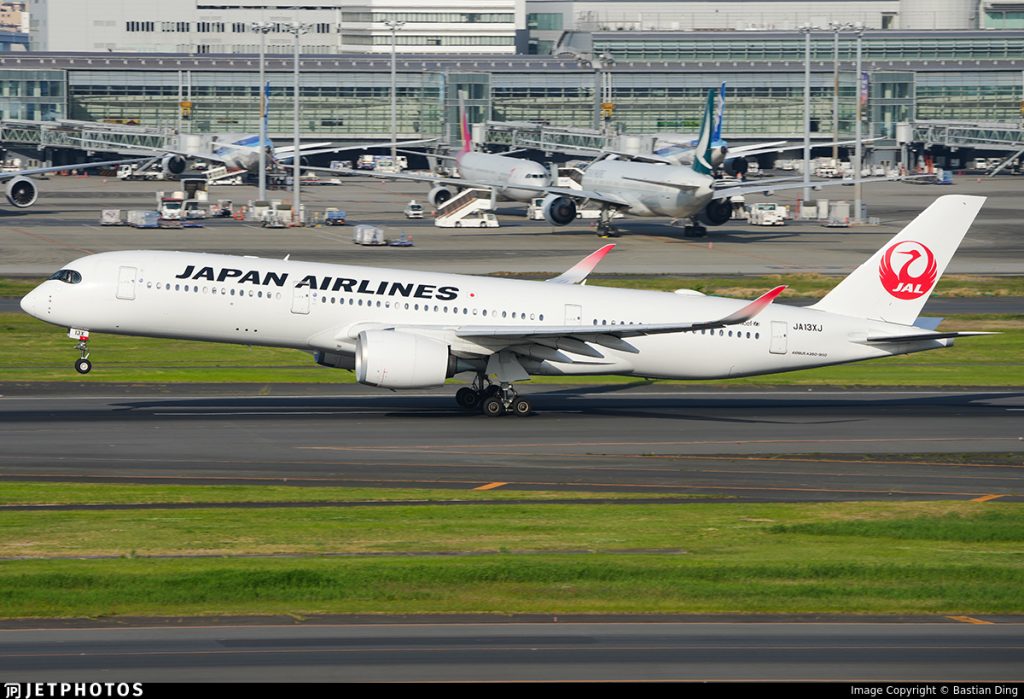A Japan Airlines (JL/JAL) Airbus A350 has been involved in a serious accident at Tokyo Haneda Airport on the evening of Tuesday, January 02, 2024. The aircraft collided with a De Havilland Canada DHC-8-315Q operated by the Japan Coast Guard on the runway at 17:47 local time. A significant fire subsequently took hold, with video footage of the firefighting efforts being shared widely around online and traditional media channels. The accident marks the first hull loss of an Airbus A350 aircraft.
【羽田空港 日本航空の機体が炎上】
国土交通省東京空港事務所によりますと、羽田空港でJALの旅客機から炎があがっていると聞いているが客が搭乗しているかどうかなどはまだわからない、情報を確認中だと話していました。https://t.co/UGWveQ1hVi#nhk_video pic.twitter.com/s4YDQhcfll
— NHKニュース (@nhk_news) January 2, 2024
Hi, I was on it. Everyone is safe and they are taking us to the terminal. pic.twitter.com/7tqOexGuqZ
— William Manzione (@wmanzione) January 2, 2024
Tracking Japan Airlines flight JL516
We tracked JL516’s journey using ADS-B. Our data reveals a normal flight and approach from takeoff to landing. JL516 departed Sapporo Airport (CTS/RJCC) at 16:27 local time and landed at Tokyo Haneda Airport (HND/RJTT) at 17:47 local time.
Landing clearance was given to the jet at 08:44:30 UTC. At 08:47:32 UTC the Japan Airlines A350 reported its position as 35.54608, 139.80063 traveling at a speed of 120 knots ground speed on Haneda’s runway 34R (also known as runway C). This coincides with the last reported data from the Japan Coast Guard Dash 8. The JAL A350 continued to report ADS-B data, though no position information, for approximately 1 minute after the collision.
Prior to the accident, the Airbus A350 was regularly operating Japan Airlines’ high capacity routes between Tokyo (HND) and Fukuoka (FUK), Okinawa (OKA), and Sapporo (CTS).
Japanese media reports that all 379 passengers and crew from the Japan Airlines Airbus A350 were evacuated safely.
Initial reports indicated that all crew members of the Japan Coast Guard aircraft had died, but NHK citing fire department officials now reports that five crew members were killed with one seriously injured.
Tracking JA722A
The last Mode S frame received from the Japan Coast Guard DHC-8 aircraft was logged at 08:47:32 UTC on January 02. The aircraft was not equipped with an ADS-B transponder. The Coast Guard aircraft was operating a mission to support the relief efforts following the earthquakes that impacted Japan on New Year’s Day.
Flightradar24 tracks aircraft equipped only with a Mode S transponder using Multilateration (MLAT). The aircraft sends a radio signal that contains the aircraft’s unique ICAO 24 bit address, altitude, and ATC assigned squawk. Unlike ADS-B messages, Mode S messages do not contain the aircraft’s position or speed. MLAT is used to calculate the position of the aircraft based on the time difference of arrival of the radio signals from the unknown source location (the aircraft) to the known location of Flightradar24 receivers. MLAT positions are only possible to calculate when multiple receivers pick up the signal from the aircraft. In the case of JA722A, signals were not seen by enough Flightradar24 receivers to calculate positions for the aircraft on the ground.
The aircraft following JL516 on approach to runway 34R was JL166, a Boeing 737-846 operating a flight from Akita (AXT) to Haneda. This aircraft commenced a go-around at 1,150 feet before diverting to Tokyo Narita Airport (NRT).
The weather in Tokyo
The reported weather conditions were unremarkable at the time of the accident, with over 10 kilometers of visibility reported and 9,000 feet cloud ceiling. The accident occurred during the hours of darkness.
Below is the METAR (airport weather report) at the time JL516 made its approach to HND.
RJTT 020830Z VRB03KT 9999 FEW020 SCT090 08/04 Q1016 BECMG TL0900 30006KT RMK 1CU020 4AC090 A3002
The impact on operations at Haneda Airport
Haneda airport suspended operations following the accident. Looking at cancellation data for January 02, we can identify that 123 departing flights and 137 arriving flights at Haneda have been canceled as of 12:30 UTC. This represents 19% and 21% of total departures and arrivals respectively.
Airport operations resumed late in the evening on 2 January. Runway 16L/34R remains closed as of 3 January.
ATC communications
Japan’s Ministry of Land, Infrastructure, Transport and Tourism released a transcript of the air traffic control audio communications between the aircraft and Tokyo-Haneda’s tower on 3 January. The transcript indicates JA722A was told to taxi to the C5 intersection hold short point while JL516 was cleared to land. The transcript below is a machine translation from Japanese, so phraseology may be non-standard. All times local.
Cover photo: MinChan Kim, JetPhotos.
The post Japan Airlines Airbus A350 collides with aircraft on landing in Tokyo appeared first on Flightradar24 Blog.
